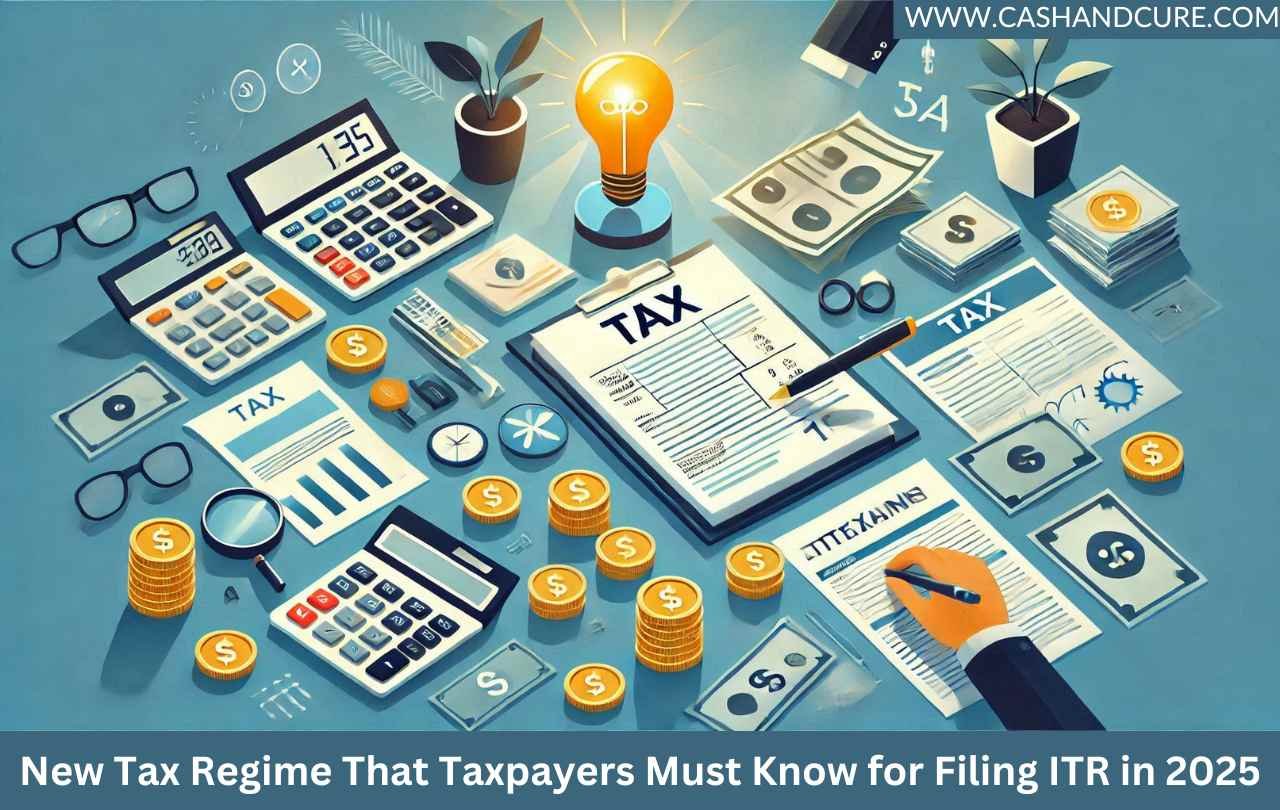New Tax Regime That Taxpayers Must Know for Filing ITR in 2025: The time to file income tax returns (ITR) for the year 2025 is fast approaching, and it has become very important for taxpayers to understand the latest updates in the new tax regime. The government has made several changes aimed at simplifying tax compliance and giving more benefits to taxpayers. In this article, we will give you all the information you need about income tax slab rates, standard deduction for salaried individuals and family pensioners, the National Pension System (NPS) and how much tax you save under the new regime.
Key Highlights of the New Tax Regime for 2025
Revised Income Tax Slab Rates:
The new tax regime offers revised slab rates with no exemptions. Taxpayers must choose between the old and new regimes while filing their ITRs.
Standard Deductions for Salaried Individuals and Pensioners:
Standard deductions have been extended to salaried individuals and family pensioners, even under the new tax regime, offering some relief.
Focus on NPS for Retirement Planning:
The National Pension System (NPS) continues to play a vital role in tax savings and retirement planning, with added benefits.
Tax Saving Potential:
With strategic financial planning, taxpayers can optimize their savings and reduce their liabilities under the new system.
1. Income Tax Slab Rates in the New Tax Regime
The income tax slabs under the new regime for FY 2024-25 have been adjusted to encourage more taxpayers to shift to the simplified framework.
New Tax Slabs:
| Annual Income (Rs.) | Tax Rate (%) |
|---|---|
| Up to Rs.3,00,000 | Nil |
| Rs.3,00,001 to Rs.6,00,000 | 5% |
| Rs.6,00,001 to Rs.9,00,000 | 10% |
| Rs.9,00,001 to Rs.12,00,000 | 15% |
| Rs.12,00,001 to Rs.15,00,000 | 20% |
| Above Rs.15,00,000 | 30% |
Key Points:
- There are no deductions or exemptions under the new regime except for those explicitly mentioned, such as NPS and standard deduction.
- Taxpayers with income up to Rs.7,00,000 can benefit from a rebate under Section 87A, making them tax-exempt.
2. Standard Deduction for Salaried Individuals
Under the new tax regime, a standard deduction of Rs.50,000 is allowed for salaried taxpayers.
Benefits:
- This deduction is automatically applied to your taxable income, reducing the overall tax liability.
- It benefits those who previously relied on multiple deductions and exemptions under the old regime.
3. Standard Deduction for Family Pensioners
For family pensioners, the standard deduction is Rs.15,000 or 1/3rd of the total pension income, whichever is lower.
Importance for Pensioners:
- This provision ensures that even pensioners can avail some relief on their tax liability under the new system.
- It simplifies compliance for senior* citizens dependent on family pensions.
4. National Pension System (NPS)
The National Pension System continues to be a crucial tool for retirement planning and tax savings under both the old and new tax regimes.
Key Features of NPS:
- Contribution Benefits:
- Under Section 80CCD(1B), taxpayers can claim an additional deduction of up to Rs.50,000 for NPS contributions.
- Employer contributions to NPS are also tax-free up to 10% of salary (basic + DA).
- Flexibility and Returns:
- NPS offers market-linked returns with options to invest in equity, corporate bonds, and government securities.
- Partial Withdrawals:
- Tax-free partial withdrawals are allowed for specified purposes like higher education, marriage, or medical emergencies.
5. How Much Tax Can You Save?
The new tax regime encourages a straightforward approach to tax filing, but taxpayers can still save significantly with proper planning.
Example Calculation:
| Income Details | Amount (Rs.) |
|---|---|
| Gross Salary | Rs.10,00,000 |
| Standard Deduction | Rs.50,000 |
| Taxable Income | Rs.9,50,000 |
| Tax (As per New Regime Slabs) | Rs.62,500 |
| Rebate Under Section 87A (if applicable) | Nil |


Leave a Reply
You must be logged in to post a comment.